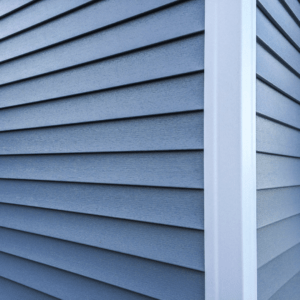Your home’s siding plays a crucial role in protecting it from the elements and enhancing its curb appeal. Over time, however, you may notice that your siding starts to fade, losing its vibrant color and looking worn out. Siding fading is a common issue, but understanding its causes and knowing how to fix it can help you maintain the beauty and integrity of your home. In this article, we’ll delve into what causes siding to fade and how to fix it.

What Causes Siding to Fade?
- Sun Exposure: One of the primary culprits behind siding fading is prolonged exposure to sunlight. Ultraviolet (UV) rays from the sun can break down the pigments in your siding’s paint or color finish, causing it to lose its vibrancy and become dull.
- Weather and Climate: Extreme weather conditions, including rain, snow, and humidity, can take a toll on your siding. Over time, these elements can cause your siding to fade and even develop mold or algae growth, further diminishing its appearance.
- Low-Quality Materials: The type of siding material you choose can also impact its susceptibility to fading. Low-quality materials may not have adequate UV protection or may be more prone to color degradation, leading to faster fading.
- Harsh Cleaning Products: While it’s essential to keep your siding clean, using harsh cleaning products or abrasive tools can damage the siding’s protective finish, making it more susceptible to fading.
- Oxidation: Some siding materials, like vinyl, are prone to oxidation. This chemical reaction with oxygen can lead to a chalky appearance, making the siding look faded and worn.
How to Fix Faded Siding:
- Regular Maintenance: The first step in fixing faded siding is to establish a regular maintenance routine. Cleaning your siding at least once a year can prevent the buildup of dirt, mold, and algae, which can contribute to fading. Use a gentle cleaning solution and a soft brush or pressure washer on a low setting to avoid damaging the siding’s finish.
- Repainting or Refinishing: If your siding has lost its color due to sun exposure or age, consider repainting or refinishing it. Choose a high-quality paint or finish that offers UV protection. Make sure to prepare the surface properly by cleaning and priming it before applying the new finish.
- Replace Faded Panels: If only a few sections of your siding are severely faded or damaged, you may opt to replace those panels rather than redoing the entire exterior. This can be a cost-effective way to restore your home’s appearance.
- Install Fade-Resistant Siding: When it’s time to replace your siding, consider using materials that are specifically designed to resist fading. For example, fiber cement and engineered wood siding tend to hold their color better than some other options.
- Apply a Protective Coating: Applying a protective coating or clear sealant can help prolong the life of your siding and reduce fading. Consult with a professional to determine the best product for your siding material.
Siding fading is a common issue that can detract from your home’s aesthetics and diminish its value. However, by understanding the causes of fading and taking proactive measures to prevent and address it, you can keep your siding looking vibrant and attractive for years to come. Whether it’s through regular maintenance, repainting, or choosing fade-resistant materials, taking care of your siding will not only enhance your home’s curb appeal but also protect it from the elements. Now that you know what causes siding to fade and how to fix it, check out these articles by Evolve Stone for more tips.
